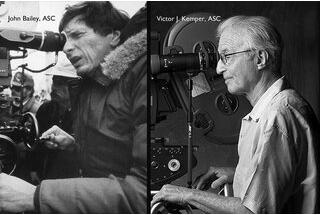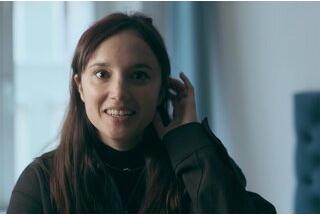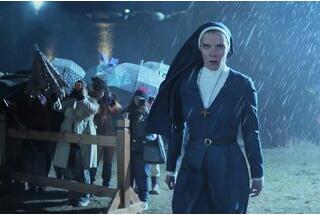Interviews about preproduction and shooting of “Notre-Dame on Fire”, by Jean-Jacques Annaud
Rekindling the FireThe unbelievable reality of the events of April 15, 2019, on which day the cathedral suffered the biggest disaster of its history. And how men and women risked their own lives in a heroic and incredible rescue operation.
Work on Notre-Dame on Fire began just before the pandemic, but rapidly came together after. Taking advantage of the first lockdown during the spring of 2020, Jean-Jacques Annaud and Thomas Bidegain, his co-screenwriter, finalized the screenplay by perusing the voluminous archives and testimonies of the event. Then, they embarked on a very precise roadmap for the actual preparation of the film during summer 2020, for a shoot that was to take place over 11 weeks from March-May 2021. Originally working off of simple carboard mockups of the cathedral (such as can be bought in shops), the director and his team had meeting after meeting to literally catalog every single shot in the film.
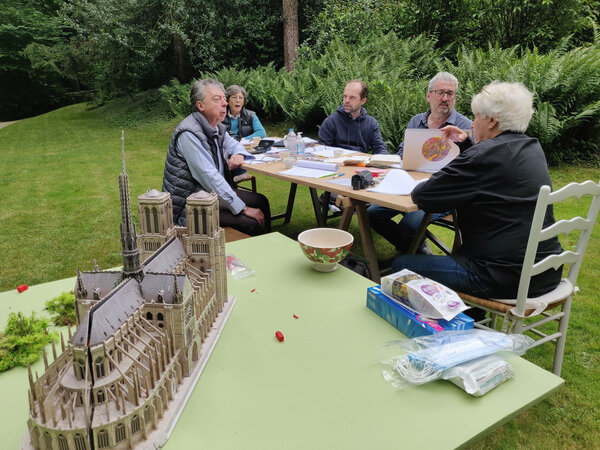
According to Jean-Marie Dreujou “This initial phase enabled us to familiarize ourselves with the cathedral, its architecture, and the whole sequence of events described in the screenplay. Jean-Jacques used a fiber optic endoscopic camera to preview his camera angles and precisely lay out his shots.”
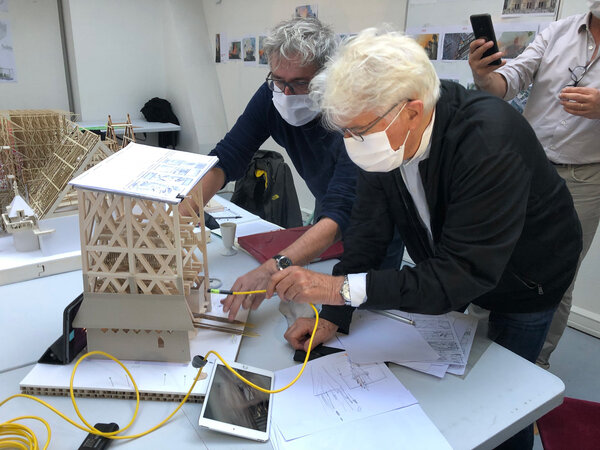
“With the invaluable help of Mathieu de la Mortière, the first assistant director, we catalogued every piece of this puzzle, which we knew would be very hard to put together.” Jean Rabasse also describes how important this first phase was: “At the beginning, we all had a little trouble knowing exactly what this film was going to be: a documentary? a fiction? But little by little, as preparation with the detailed mockups went on, I realized that Jean-Jacques was determinedly heading towards an extremely well-documented film that was yet a fiction. For me, perhaps it was somewhat reminiscent of the spirit of his film on the Battle of Stalingrad (2001). If the very idea of recreating Notre-Dame for a film seems almost surreal, it is undoubtedly because Jean-Jacques really has no limits as a filmmaker… He’s literally afraid of nothing! And it is thanks to the meticulous preparatory work between the director, the producer, the set designer, and the special effects director, that we were able to put together a method for making this film.”
From a narrative point of view, Jean-Jacques Annaud decided to integrate both archival footage of the cathedral from before the fire (in particular, for the mass that preceded the disaster), extracts from reports and television channels’ live coverage of fire, and, of course, a majority of reconstituted shots, either on location, or in other cathedrals, or in studio.
“Jean-Jacques Annaud is a man who likes challenges,” says Jean-Yves Asselin, the film’s executive producer (who has worked alongside him since the 1992 film L’Amant). “He takes us on new adventures with each project, often to the other side of the world. But this time, he tried to reassure me by telling me that only a Pass Navigo would be required for me to make this film. As I expected, the undertaking turned out to be even more complex than usual! The first step was to list the existing cathedrals that could serve as locations. The Cathedral of Sens, considered by experts to be a sort of matrix for Notre-Dame, was logically chosen. As were Bourges and Saint-Denis (currently undergoing renovation) to splice in a few opening scenes with the construction work. All in all, six real cathedrals were used in this film.”
Jean-Marie Dreujou adds: “Bourges Cathedral has two side aisles that are nearly similar to those of Notre-Dame. That’s where we were able to shot the scene where they rescued the crown, by recreating the Chapel of the Seven Sorrows and using fake rain and quite a bit of smoke. Another idea was to take advantage of the vaulted ceilings and the stained glass windows that could be used as bridging shots to take as many low-angle shots as possible. In addition, the floor of the Cathedral of Sens and its forecourt were used for the high-angle shots, as was the entrance to the spiral staircase leading to the belfry (the upper part leading to the locked door was reconstructed in studio). Thus, in a scene such as that of the little girl escaping from her mother, the shots were bridged directly between Sens and Bourges, depending on the camera angle.”
Once the analysis of on-location shots had been completed, the question of how to recreate the fire itself, the dramatic heart of the project, came up.
Jean Yves Asselin continues: “For the actual fire scenes, we wondered whether it would be possible to shoot in studio. A large part of the Bry studios was occupied by the shooting of Astérix at that time, and we were slightly limited in our choice of infrastructure. Especially since there’s a minimum height required for fire scenes, in order to be able to manage the fire and to evacuate the smoke. By studying the question with the set decorator and the SFX team, we opted for an exterior north transept set on the former parking lot of the INA, very close to the Bry studios (to facilitate the work of the different teams). At the same time, we opted for the Cité du Cinéma in Saint-Denis in order to rebuild the north belfry and the cathedral’s nave (where a part of the vault, situated under the spire, collapses).
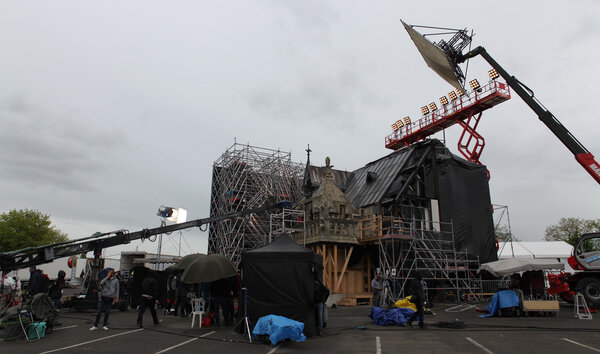
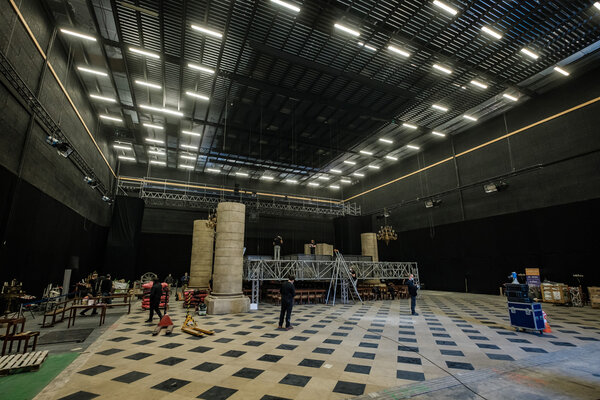
This mixed configuration also allowed us on set to go from one site to the other in order to allow the crews to advance each set’s level of destruction from the fire.”
In order to obtain the aforementioned height required for the belfry set, Jean Rabasse even used the pit in the large set to gain three meters.
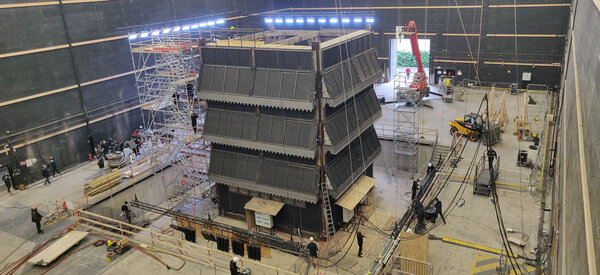
“The north belfry is a good example of the relationship to exactness that we had on this film, and the spectacular quality Jean-Jacques wanted. In fact, in the actual cathedral, the northern tower is outfitted with smaller bells (1.8 meters in diameter). But, in order to increase the feeling of danger in those scenes, where a team of volunteers is risking life and limb, we decided to install a reproduction of the Bourdon (2.7 meters in diameter) which is actually hanging in the southern tower. Its volume on screen immediately lent credence to the risk the building would collapse if the bell fell…”
After reviewing the vast range of fire-retardant materials (including a number of composites used in contemporary construction), Jean Rabasse finally chose to work with traditional products: “After several combustion tests Jean-Christophe Magnaud and I performed, we realized that only the combination of steel, plaster and wood would really hold up at high temperatures (certain parts needed to be exposed to 1,200°C temperatures for the length of a take). So, I hired all of the staffers available in Paris to sculpt and reproduce the false stones and the different sculpted pieces on each set. This knowledge is disappearing and I enjoyed seeing them at work. The bells that I mentioned a moment ago were carved out of Norway spruce and then washed at very high pressure to erode their surface and age them, and then they were surface-burnt with a flame and patinated with a special fire paint…
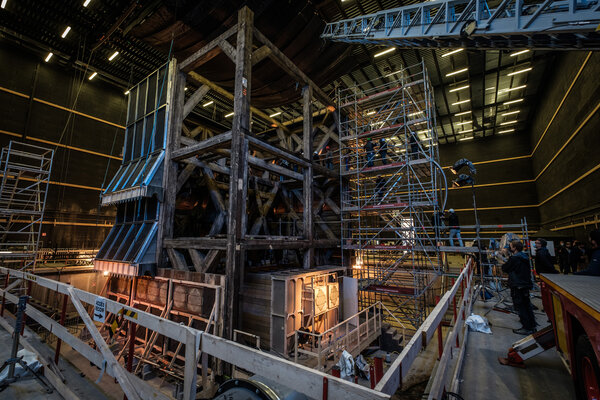
This was another aspect that was exaggerated compared to the beams of the actual cathedral, but it was necessary in order to look credible on screen when lit only by the flames… Another aspect of shooting in the belfry required a flawless collaboration with Jean-Jacques Annaud: “Each flaming beam was equipped with its own gas line, and each camera angle had to be determined in advance so they wouldn’t appear in the shot. But, once again, I have to salute Jean-Jacques’ extremely precise choices. Once preparation was completed and shooting began, nothing was ever questioned and everything was shot exactly the way he’d requested,” adds Jean Rabasse.
Security was also a central concern, and the sets of the Cité du Cinéma are outfitted with a series of detectors (temperature, oxygen, carbon monoxide, etc.) that automatically sound an alarm in case the levels are exceeded. “When we were shooting with all of the gas jets opened at full intensity, we’d hear the alarm go off after 5 minutes of shooting, and we’d have to evacuate the studio and cut the gas in order to renew the air and continue with the following take,” explains Jean-Marie Dreujou. “This process caused us to lose a half hour with each take, but it was inevitable because of the quantity of gas being burnt and the natural accumulation of carbon monoxide in the lower part of the room.
Jean-Christophe Magnaud adds: “The temperature could rise pretty quickly indoors. We stayed at around 75°C at the arches at the top of the studio on the belfry scenes, but it got hotter on the set where the nave was. Especially for the scene where the vaulted ceiling collapses, we measured a peak of nearly 240°C near the ceiling for a few seconds…”
Sometimes shooting near to the flames, the crews were clad in fire-resistant outfits and were supervised by many professional firefighters. “With a tank of 4 tons of gas sitting right outside the studio doors, and dozens of copper conduits bringing the gas onto the set, we can decently say we really had a gas!” jokes Jean-Yves Asselin.
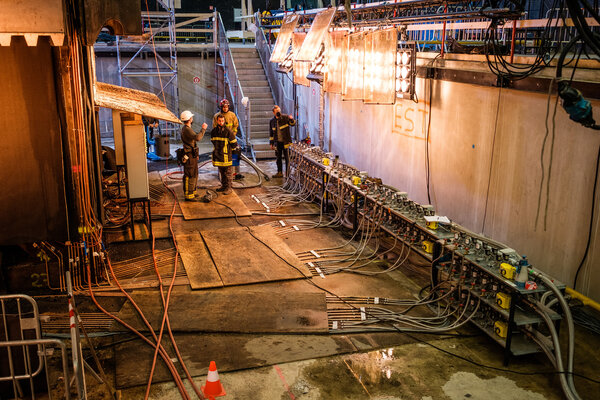
“Shooting with such a large quantity of flames on set was really an esthetic choice Jean-Jacques made,” explains Jean-Christophe Magnaud. “He’s a director who prefers to exploit live effects as much as possible, even though his technical mastery also enables him to use VFX. Which he did, sometimes, to visually emphasize the dangerousness of the flames. In any case, his initial request for an enormous fire wasn’t so simple. A story about this is that the structure of the northern transept, which we built outdoors at Bry on the base of metal beams, was already veiled after two days of shooting! Because of the repeated tests and our work with the set design crew, we were able to refine things gradually and climb the mountain we faced on every page of the script.”
On the scenes where the camera follows the first responders to the fire, who are dwarfed by the scale of the inferno, Jean-Marie Dreujou also had to devise a rather cumbersome scheme to ensure these scenes could be bridged with the archival footage. “Because the northern transept was already in the shadows by the end of the afternoon the day of the fire, I had to set up an enormous 12 x 12 meter frame covered in fire-retardant fabrics to cut the sunlight on the Bry parking lot. In addition to the glow of the flames, which were obviously less intense than the actual inferno, I placed a battery of Dinolights on dimmers to enhance the effect.”
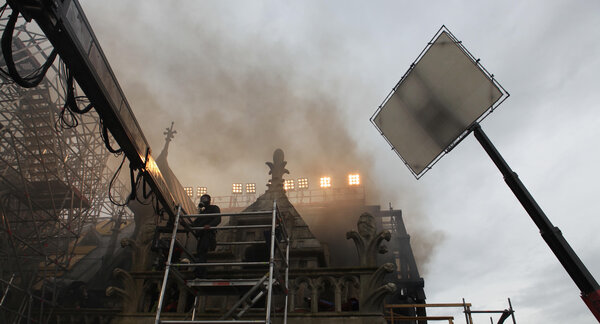
The crew was particularly lucky as regards the weather: they benefitted from mainly sunny and windless conditions, which would have majorly complicated their task at Bry, especially with the flames.
For the scenes shot on the actual forecourt of the cathedral, their constraints regarding the position of the Sun were significant: “The façade of the Police Prefecture building (across the street from the cathedral) was in the shadows at the time of the event. So, we had to wait for that to happen naturally to begin filming, because there would have been no realistic way of faking the background,” explains Jean-Marie Dreujou.
Opting for a three-camera configuration (one with a long-focus lens and the others on the shoulder), the cinematographer also often used a crane that he would operate himself using the hand levers. “Because the film will be shown in Imax theaters, I had lots of technical requirements that I had to comply with. One of their recommendations was the Alexa LF camera. A 1.85 format was chosen in order to optimize the shots of the cathedrals. I personally chose to shoot with the new Angénieux Full Frame zoom lenses (EZ-1 45-135 an EZ-2 22-60) in order to be able to quickly take lots of shots. All of them were outfitted with remote aperture control, which allowed us to quickly adapt to changing lighting conditions as the camera angles and the flames changed. The film was shot entirely at 800 ISO, with relatively closed apertures for the fire scenes, as the correct setting for the apertures was often between 11 and 16 at 24 fps.”
For some shots filmed from inside the heart of the flames (especially the belfry scene, in the last part of the film), two special boxes were even used. They were built using insulating materials and cooled by a fire-coated duct connected to an air conditioner, with a Blackmagic Micro inside each one.
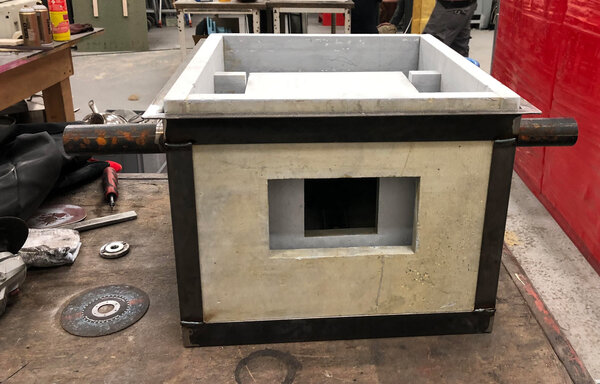
Placed amidst the gas lines, these boxes enabled us to take pretty spectacular static shots. Except for a rare traveling shot (in the same sequence), which was taken using a tube system designed by our key grip Bruno Dubet and pushed from afar using a 4-meter-long pole.
This was a unique film that seems to be an excellent memory for the whole crew: “I have the image of a smoothly-turning screw,” says Jean-Yves Asselin. “A truly perfect chain of events, whether it be the way we avoided Covid or safety on set, which was perfectly handled.” Jean Rabasse also remembers the meticulous pre-production work: “This film truly represents for me what trust can mean in filmmaking. This project seemed unmakeable at the start, but thanks to the alliance of various talents, we gradually found solutions.”
“An excellent crew, at the service of a precise and demanding director,” adds Jean-Christophe Magnaud. “An ideal situation that pushed everyone to go beyond their best.”
“A unique experience related to a unique place,” according to Jean-Marie Dreujou, “which we all felt truly privileged to be able to participate in.”
(By François Reumont and translated from french by A. Baron-Raiffe, for the AFC)
Notre-Dame on Fire
Director: Jean-Jacques Annaud
Production: Pathé
Executive Producer: Jean-Yves Asselin
First Assistant Director: Mathieu de la Mortière, AFAR
Set Designer: Jean Rabasse, ADC
 En
En
 Fr
Fr
